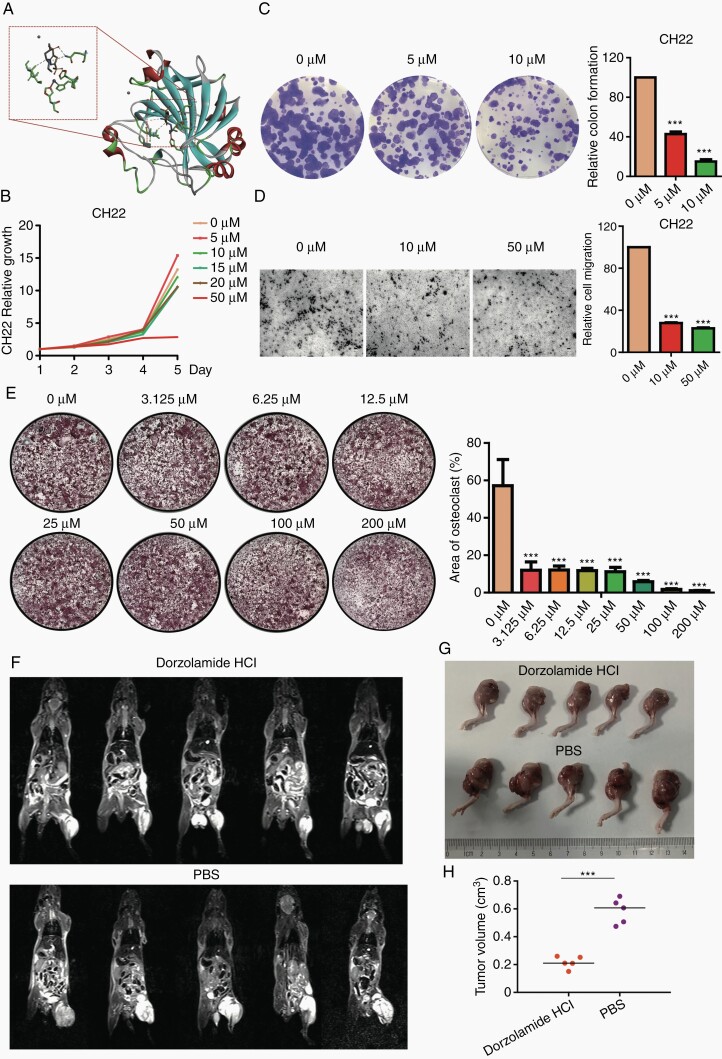Fig. 6.
Dorzolamide HCl inhibits proliferation, migration, and tumorigenicity in chordoma cell lines and blocks osteoclastogenesis in BMMs. (A) The ribbon display mode of the overall structure of CA2 and Dorzolamide in docking conformation (right). α-helices were described in red, with β-sheets in cyan and β-turns in green; Dorzolamide was presented in stick; and Hg2+ and Zn2+ ion was presented in ball. Close-up view of active center and Dorzolamide was shown in left and key residues were in stick and labeled blue; (B) MTT assay showed a significant inhibition of cell proliferation after Dorzolamide HCl treatment in CH22 cells in a time- and dose-dependent manner; (C) representative images of CH22 colony formation after Dorzolamide HCl treatment (left); clone formation assay showed the cell colony formation was significantly reduced after Dorzolamide HCl treatment in chordoma cell lines (right); (D) representative images of CH22 cell migration after the treatment of Dorzolamide HCl (left); the transwell invasion chamber assays showed that the migration ability of chordoma cell lines was markedly reduced after Dorzolamide HCl treatment for 48 hours (right); (E) representative TRAP-stained images of BMM-derived osteoclasts stimulated with RANKL after indicated concentrations of Dorzolamide HCl treatment (left); the area of TRAP+ multinucleated osteoclasts indicated that Dorzolamide HCl dose-dependently inhibits RANKL-induced osteoclast differentiation (right). MRI scans (F), left legs (G) and tumor volumes (H) of Dorzolamide HCl- and PBS-treated CH22-bearing nude mice. *P < .05, **P < .01, ***P < .001. Abbreviations: BMM, bone marrow monocyte; CA2, carbonic anhydrase II; MRI, magnetic resonance imaging; PBS, phosphate-buffered saline; RANKL, receptor activator of nuclear factor-κB ligand; TRAP, tartrate-resistant acid phosphatase.

